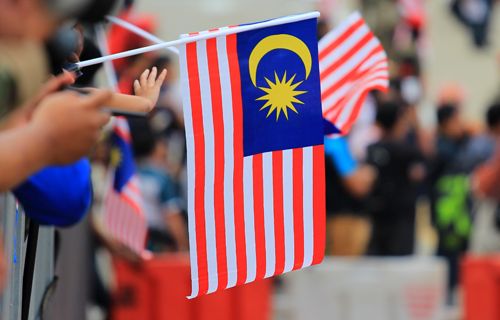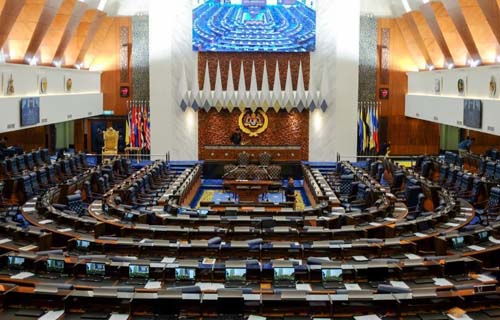Racism in Postcolonial Malaysia

Written by Gabriel Pereira, a member of Akar Umbi Kita, a programme for emerging advocates against racial discrimination by Architects of Diversity, Imagined Malaysia, IDEAS and the European Union. This article is published in conjunction with the International Day for the Elimination of Racial Discrimination.
In Malaysia, racialised minorities, such as Malaysian Indians, are subject to discrimination in various facets of everyday life. Over the past two years, rental racism against Indians has been a significant topic of debate in local media, highlighting the absence of anti-discrimination legislation in addressing such incidents. Rental racism has shown how negative racial stereotypes, with colonial origins, are used to exclude Indians from the Klang Valley rental housing market in postcolonial Malaysia. However, ongoing intercultural exchanges which allow for discriminatory perceptions to be transformed, thereby envisioning a more united Malaysia.
The two main legacies of British colonialism in Malaysia are the large-scale migration of Chinese and Indians to work in the tin and rubber plantations respectively, and the institution of the define-and-rule system which racialised the economic, social, and political spheres of Malaysian life. Therefore, examining race in Malaysia necessarily requires one to understand the racialised division of labour and space that was a mainstay of colonial rule, as it leaves a permanent mark on Malaysian social life through reduced zones of contact. Although British colonialism in Malaysia ended with Independence on August 31st, 1957, these colonial racial divides have been maintained and perpetuated by politicians in the newly independent nation-state with divisive consequences.
Most of the Indians in modern-day Malaysia are descendants of lower-caste Tamil rubber plantation coolies. The caste system is a Hindu apparatus used to categorise Indian ethnicities according to “social class, disposition, conduct, and aptitude”, and it is based on this historical backdrop that negative racial stereotypes against Malaysian Indians. Indian tenants in the Klang Valley rental housing market are stereotyped as uneducated, dirty, dangerous, and bad payers. Although nowadays most Indians in urban areas of the country are well-educated and economically prosperous, these labels are still attached to them due to their historical origins.
The problems Tamil coolies encountered in the rubber plantations, mainly, low wages, inhumane living conditions, and inferior health and educational facilities, have crippled them when they were forced to move out of the estates because, without adequate education, they could not apply for jobs and turned to crime to make ends meet. This explains how structural economic inequalities shape present-day racial stereotypes of Indians being uneducated, dirty, and dangerous. Besides, Indian tenants are also stereotyped as bad payers which dissuades landlords who are worried that Indians would be tardy with the rent and eventually default on the amount. These negative perceptions are so deeply ingrained in society that they continue to reinforce racial and class-based polarities among Malaysians by sustaining the erroneous belief that Indian tenants are uneducated, dirty, dangerous, and bad payers.
The polarities Malaysians are subject to are intimately associated with the concept of race because it continues to be a defining and major segregating factor in Malaysia. However, outside of state mechanisms and politics which separate Malaysians according to race and indigeneity, everyday intercultural relations do not directly reflect this division, which throws the necessity of race as an identifying feature into question. This is especially evident among urban youth who prefer to identify as Malaysian rather than as members of a racialized group. Consequently, this explains why state attempts to unite people through initiatives such as 1Malaysia are unsuccessful, because they do not address the core issue of segregation that is embedded in Malaysian society as a result of racial compartmentalization and racist political rhetoric. Thus, these campaigns are perceived as sugar-coating the lived realities that racialized groups, especially side-lined communities, face daily. To truly identify as Malaysian, one should not make distinctions based on the Malay, Chinese, Indian, and Others (MCIO) paradigm, because continuing to do so only perpetuates current racialized pigeonholes instead of unifying communities. Hence, this calls for a Malaysian society based on cosmopolitanism that prizes diversity as its core value, recognizes that individuals have multiple identities which cannot be reduced to a single label (e.g., race), and champions an open disposition toward different cultures and individuals. Cosmopolitanism could be a strategy to undo racialization in Malaysia because it enables people to organize their solidarities and identities along the common denominator of nationhood rather than race. Cosmopolitanism, in the Malaysian sense, would enable one to maintain one’s cultural identity while simultaneously finding common ground to connect with diverse individuals.
While cosmopolitanism could be a social policy in Malaysia, in everyday life individuals can challenge racism through transformative interracial dialogue, a method for challenging racism and dismantling the obstacles that prevent a person from unlearning prejudiced perceptions. However, these conversations rarely take place due to the sensitive nature of race and racism. Nevertheless, these dialogues need to transpire because they are effective in transforming viewpoints and producing change since they present to privileged individuals the realities and effects of racism from a marginalized standpoint. Additionally, if one is not from a subjugated group, this could also be viewed as an act of solidarity with those who experience racism, because one consciously chooses to employ one’s racial privilege in order to deconstruct discriminatory perceptions.
In conclusion, change is gradual. Importantly, it needs to willingly come from within a person in order for it to be meaningful and impactful. This opinion piece shows that racism in postcolonial Malaysia is deeply tied with the colonial origins of racialized groups. Furthermore, the maintenance of colonial racial categories in the postcolonial nation-state only serves to perpetuate racism with harmful repercussions. To truly unite Malaysians, racialized groupings should be replaced with a cohesive Malaysian identity while preserving the unique cultures and heritages that people have. This transformation takes time, but thorough interracial dialogue and cosmopolitanism as a federal policy of ethnic integration, eventually, a more harmonious Malaysia will be realized for all.


